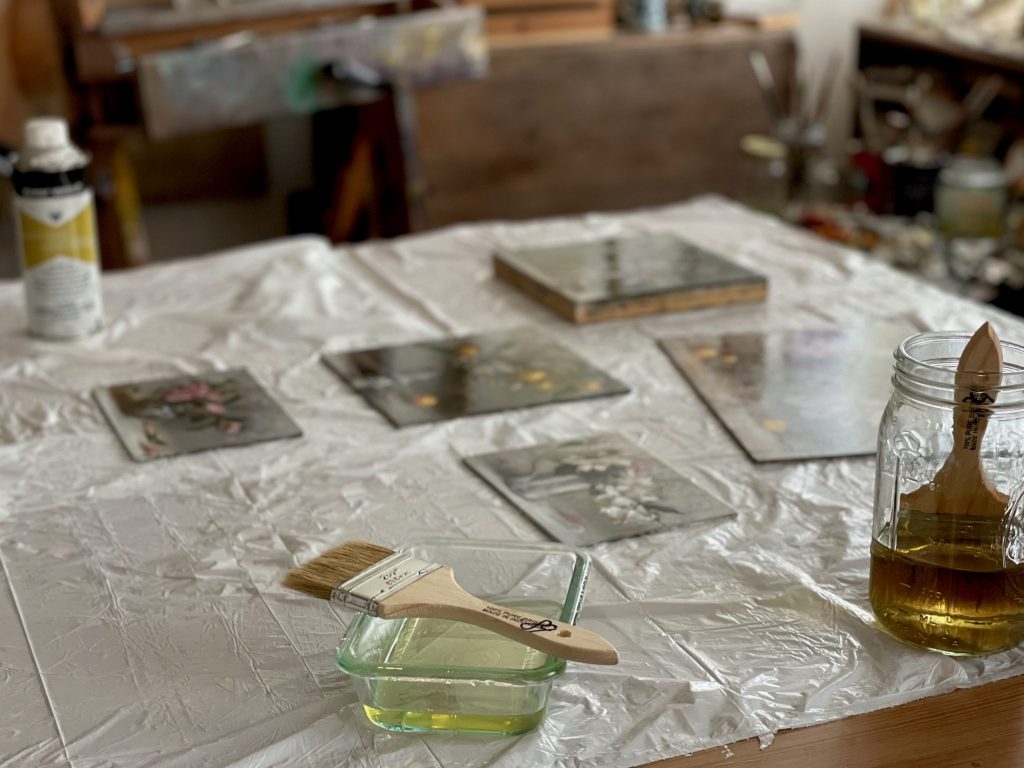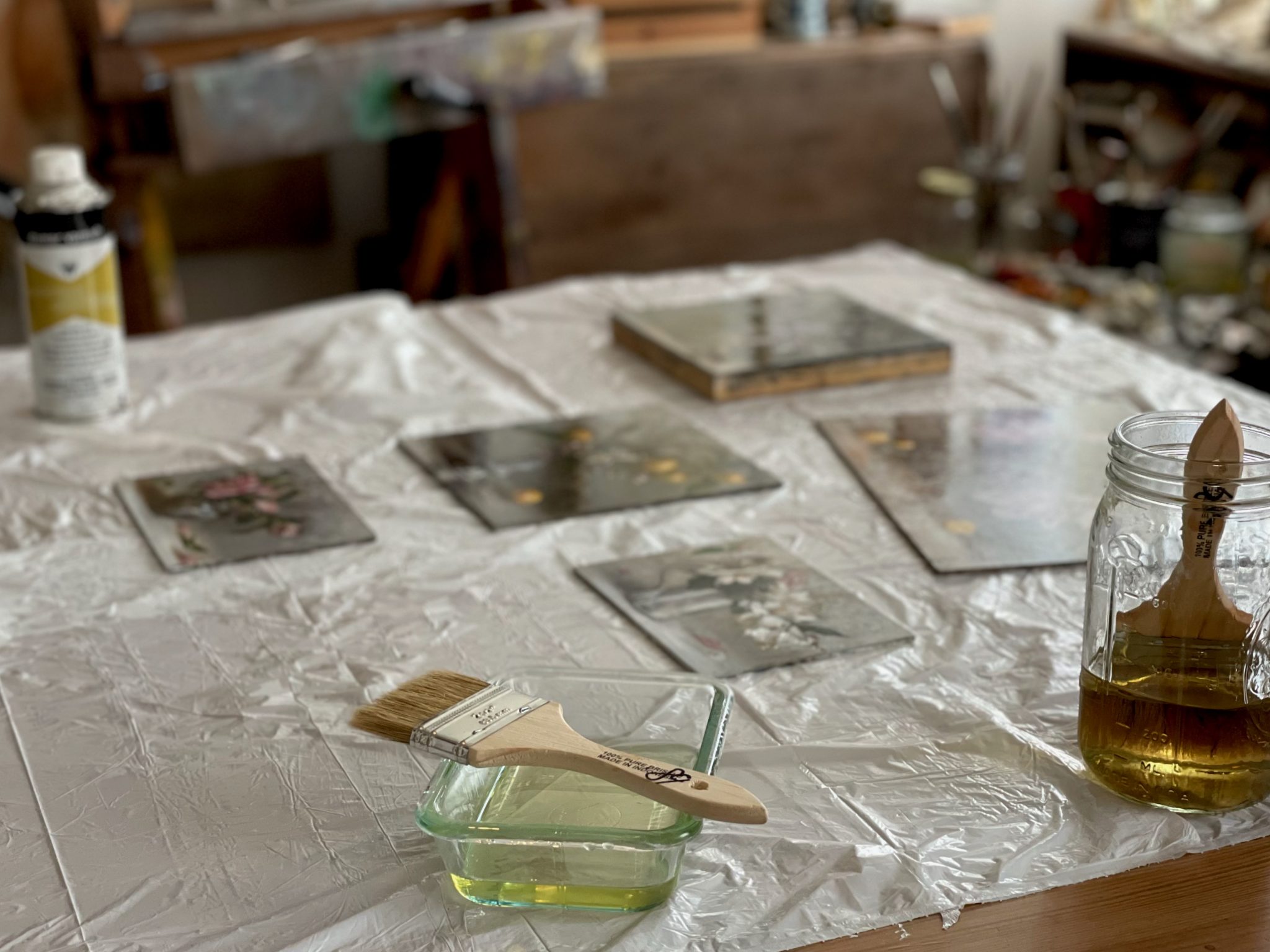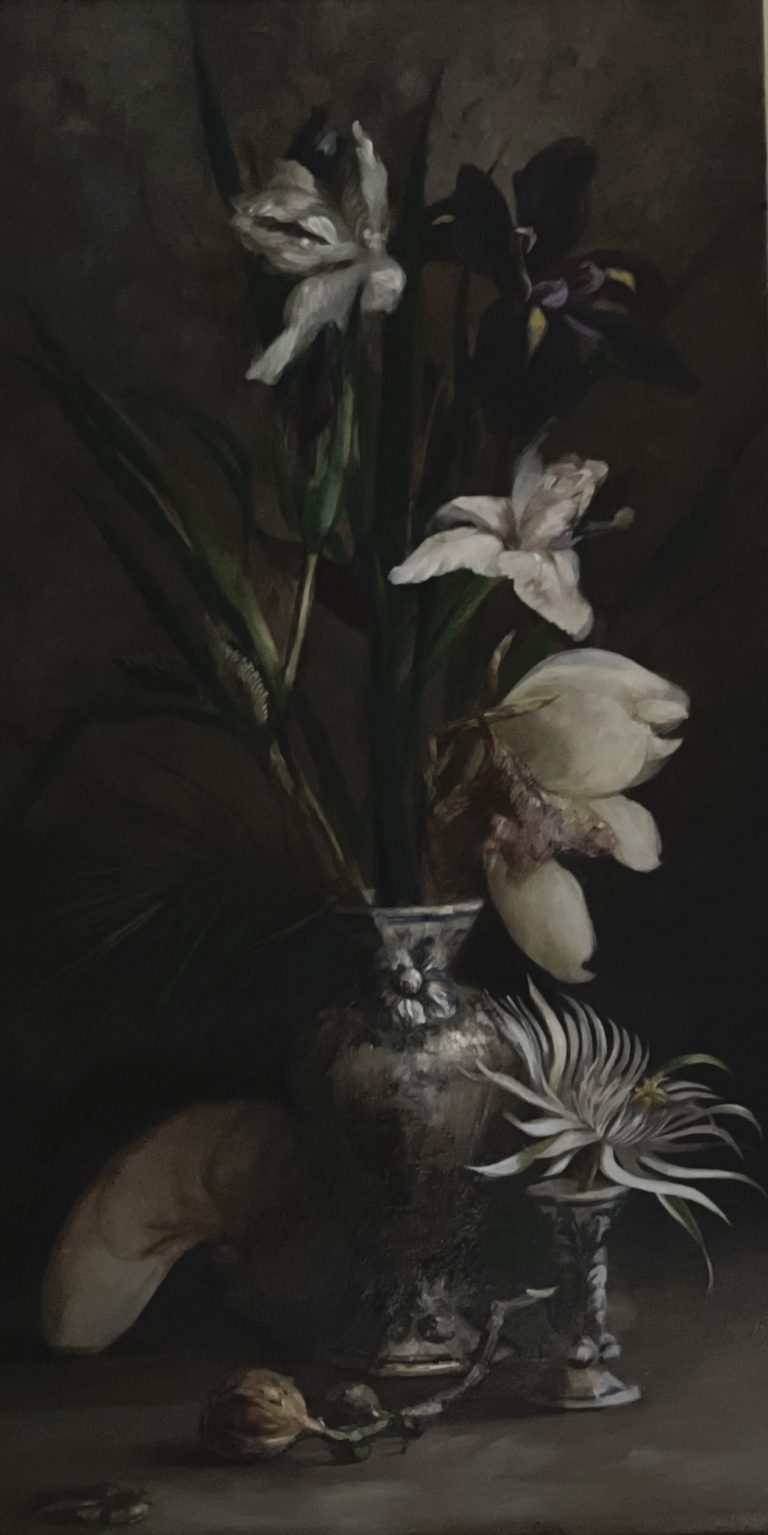
Time to prepare to varnish (clean and vacuum every piece of dust/dog hair that might be inclined to float/settle on a painting; move everything off of my work table to make room for laying all new work flat; be prepared to leave things quiet and undisturbed while I start digging up picture framing equipment for the next step after varnishing.
Varnishing pictures means that the actual painting process is over. This is the hardest step for me. It means taking a careful and critical look at everything meant for a show and deciding what is finished and what will need to wait for the next show. In today’s case-I will have a total of 7 new paintings for an exhibition when I was planning on a group of 10. What stays, what goes, what gets re-grounded, what gets put aside to work on later. It is a difficult process which requires deciding what is “good enough,” and what is not.
Varnish provides a protective layer between the painting and the environment. It keeps the work separate from factors such as fireplace smoke, accidental spills, and other unanticipated issues. The varnish can be removed if there is ever a problem revealing a damage free painting beneath.
Varnish will also bring back the reflective quality of dried oil paint. Did you know that each color dries with different reflective properties and many look completely different while wet than when dry. Some artists work with this variation and actually use it as part of their process and completely refrain.
I love the vibrance and reflective quality of wet paint and after working in art conservation years ago have seen first hand the benefits of keeping a painting well protected.



